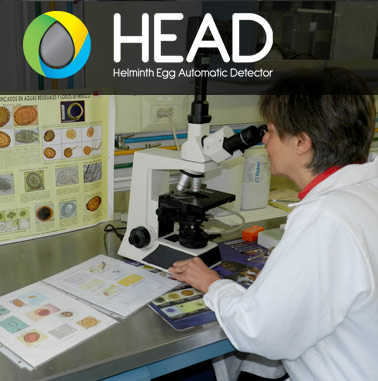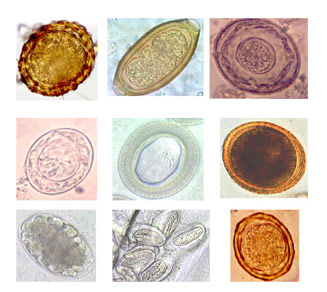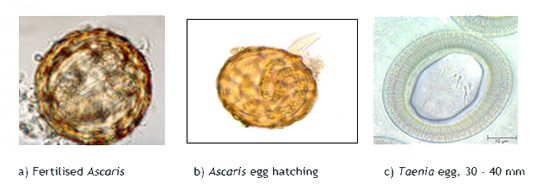
Helminth eggs are the infective agents for different types of worm diseases, globally known as helminthiasis. Globally, it is estimated that around 2.5 billion people are affected with helminthiasis. Helminthiasis are different diseases that result in diarrhea, undernourishment, and anemia, mostly in children between 5 and 15 years of age, affecting their quality of life and physical and mental development.


Even though helminths are pluricellular animals, their eggs are microscopic (20 to 80 µm for those relevant in the environmental engineering field) and are contained in variable amounts in wastewater, sludge, and excreta. Helminth eggs infect humans through:
1.The ingestion of food crops polluted with wastewater, sludge, or excreta.2.Direct contact with polluted sludge or fecal material.3.The ingestion of polluted meat or fish.The eggs of different helminth species vary in terms of shape, size and resistance. Due to different health conditions in different countries, the type of helminth eggs and their content in wastewater and sludge also varies. Ascaris eggs are the most common and ascariasis is the most common helminthiasis worldwide. The content of other helminth eggs in wastewater determines the local patterns of disease.

Figure 1 Examples of helminth eggs found in wastewater, sludge or excreta. (a) and (c) from Atlas of Medical Parasitology, (b) courtesy of Catalina Maya, Treatment and Reuse GROUP, UNAM.
